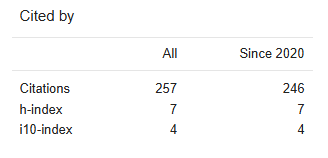Paper Details


Call For Papers
Volume 06, Issue 12
Frequency: 12 Issue per year
Paper Submission: Throughout the Month
Acceptance Notification: Within 2 days
Areas Covered: Multidisciplinary
Accepted Language: Multiple Languages
Journal Type: Online (e-Journal)
Announcement

Publish books with ISBN Number
- Edited Book
- Text Book
- Ph.D Thesis
- Conference Proceedings
ISSN Number:
2582-8568
Journal DOI No:
03.2021-11278686
Title:
Technology-Enhanced Learning for Students with Autism
Authors:
Cite this Article:
,
Technology-Enhanced Learning for Students with Autism, International Research Journal of Humanities and Interdisciplinary Studies (www.irjhis.com), ISSN : 2582-8568, Volume: 5, Issue: 11, Year: November 2024, Page No : 13-23,
Available at : http://irjhis.com/paper/IRJHIS2411003.pdf
Abstract:
Abstract: Technology-Enhanced Learning (TEL) has emerged as a transformative approach to support students with autism, addressing their unique educational needs through innovative digital tools and adaptive learning environments. This paper explores the role of TEL in enhancing learning outcomes for students on the autism spectrum, examining how various technologies—such as assistive software, mobile applications, virtual reality, and artificial intelligence—can support communication, social interaction, sensory integration, and academic skills. The study synthesizes recent research on the effectiveness of TEL interventions, highlighting tailored learning experiences that accommodate diverse abilities and learning preferences in students with autism. Furthermore, it discusses practical considerations for implementing TEL in educational settings, including the importance of individualized support and collaboration with educators and families. Findings suggest that TEL not only improves engagement and motivation but also fosters independence and self-confidence in students with autism, contributing to more inclusive educational environments. This research underscores the potential of TEL as a powerful tool in special education, advocating for further development and integration of technology-driven resources to empower students with autism and enhance their learning experiences.
Keywords:
Keywords: Technology-Enhanced Learning (TEL), Autism Spectrum Disorder (ASD), Assistive technology, Inclusive education, Digital tools in special education, Virtual reality in autism education.
Publication Details:
Published Paper ID: IRJHIS2411003
Registration ID: 21663
Published In: Volume: 5, Issue: 11, Year: November 2024
Page No: 13-23
ISSN Number: 2582-8568
Download Full Paper: Click Here
Article Preview:





